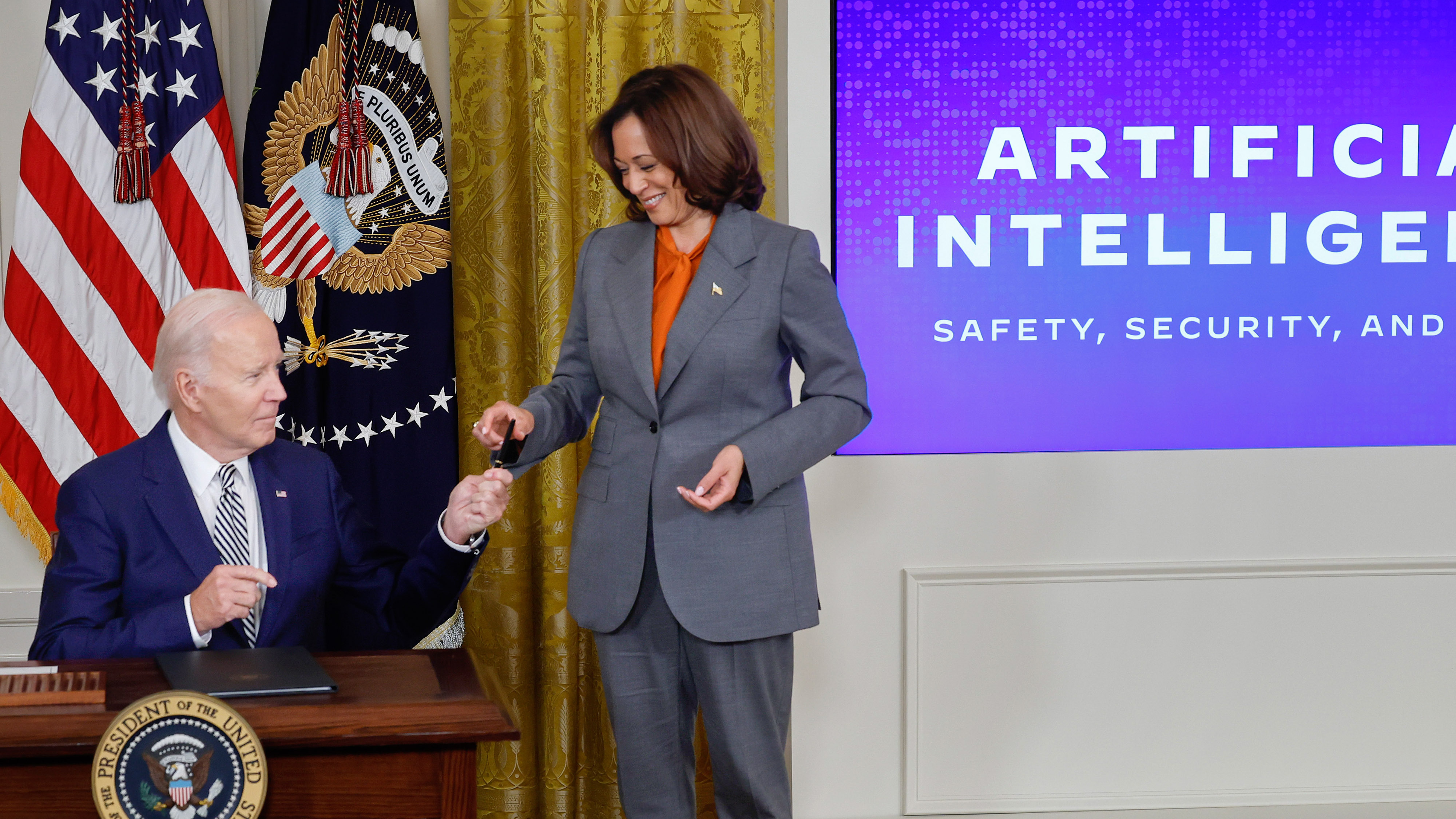President Biden issues major executive order on AI — what it means for you
New executive order will change how tech giants develop and use AI

President Biden has signed a new executive order that aims to regulate artificial intelligence to prevent it from being misused by companies while also ensuring that the privacy of Americans won’t be put at risk by this emerging technology.
According to a press release from the White House, the executive order will establish new standards for AI safety and security, privacy protections regarding the use of AI and it will promote innovation and competition so that the U.S. can lead the way in the development of the technology.
As a result of this landmark executive order, OpenAI, Google, Microsoft and other companies will be required to share the results of their safety tests and other critical information with the U.S. government. While this won’t apply to ChatGPT and Google Bard, it will apply to future generations of the AI models used to power these chatbots.
The National Institute of Standards and Technology (NIST) has also been tasked with developing standards, tools and tests to ensure that AI systems are safe, secure and trustworthy. Once these are complete, the Department of Homeland Security will then apply these standards to critical infrastructure sectors while also establishing an AI Safety and Security Board.
Given that AI can be used for phishing and fraud, the Department of Commerce will require that AI-generated content carries a watermark. It will also work to develop guidance for content authentication which federal agencies will then use to make it easy for Americans to know whether or not the communications they receive from the government are authentic. This should help cut down on AI being used for impersonation scams designed to steal your Social Security number and other sensitive data.
This new executive order also builds on the Biden administration’s AI Cyber Challenge initiative which aims to make software and networks used by the government more secure by harnessing the power of AI to find and fix vulnerabilities in critical software. At the same time, the executive order will also see a new National Security Memorandum on AI developed by the National Security Council and White House Chief of Staff that will ensure the U.S. military and intelligence community use AI safely, ethically and effectively in their missions.
Preventing AI from putting your privacy at risk

Although many parts of this new executive order apply to the U.S. government and to the companies developing AI, there’s also quite a bit in there about protecting the privacy of Americans.
Sign up to get the BEST of Tom's Guide direct to your inbox.
Get instant access to breaking news, the hottest reviews, great deals and helpful tips.
For starters, President Biden is calling on Congress to pass bipartisan data privacy legislation designed to protect all Americans and especially kids from the dangers posed by AI. As part of these measures, federal funding will be used to accelerate the development of privacy-preserving techniques like AI systems that can be trained while preserving the privacy of the training data used to teach them.
The Executive order also calls for the way in which agencies collect and use commercially available information — including information on Americans they purchase from data brokers — to be evaluated. This is a step in the right direction but myself and many others would prefer if U.S. government agencies stopped buying location data and other sensitive information from data brokers altogether.
President Biden’s executive order also deals with equity and civil rights in a bid to prevent AI from being used to discriminate against Americans. For instance, landlords, federal benefits programs and federal contractors will be provided with guidance on how they can prevent AI algorithms from being used to make discrimination worse. Likewise, best practices will be established regarding the use of AI in sentencing, parole, probation, surveillance, forensic analysis and more.
The executive order also deals with responsible use of AI in healthcare and the education system as both of these sectors can be transformed by AI to better benefit American consumers and students.
Outlook: President Biden is done waiting
When it comes to AI, Congress has been slow to act. Instead, it has decided to learn more about the technology before U.S. lawmakers begin passing new laws to regulate it. With his new executive order though, President Biden is taking a much more pro-active approach.
Even before signing this new executive order, the Biden administration has already started working to develop an AI Bill of Rights. It contains five principles designed to help guide the design, use and deployment of automated systems in such a way that the rights of the American public remain protected during the age of AI.
Like all executive orders, this one carries “the force of law” according to a senior administration official that spoke with CNBC. This means that the U.S. government can now start going after companies and organizations that abuse AI for their own gain.
We’ll likely learn more about the Biden administration’s plans regarding AI going forward but this new executive order is a great first step to ensuring that the privacy and safety of Americans won’t be put at risk as AI continues to advance.
More from Tom's Guide

Anthony Spadafora is the managing editor for security and home office furniture at Tom’s Guide where he covers everything from data breaches to password managers and the best way to cover your whole home or business with Wi-Fi. He also reviews standing desks, office chairs and other home office accessories with a penchant for building desk setups. Before joining the team, Anthony wrote for ITProPortal while living in Korea and later for TechRadar Pro after moving back to the US. Based in Houston, Texas, when he’s not writing Anthony can be found tinkering with PCs and game consoles, managing cables and upgrading his smart home.
